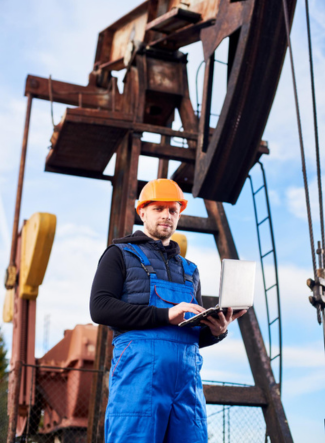
The Science Behind Manufacturing Cranes
Designing a manufacturing crane involves a delicate balance of engineering principles and advanced technologies. Some key components of crane design include:
Load Capacity : Engineers calculate the crane's load capacity by considering the weight of the load, the crane's structural integrity, and the boom's length. Safety margins are always included to prevent overloading.
Structural Design : The crane's structure must be robust and durable to withstand the loads and environmental conditions it will encounter.
Control Systems : Modern cranes use advanced control systems that enable operators to manipulate the crane with precision. These systems often include features like anti-sway technology to ensure stability.
Safety Mechanisms : Safety is paramount in crane design. Cranes are equipped with features like emergency stop buttons, load limiters, and safety alarms to protect workers and prevent accidents.
Conclusion
Manufacturing cranes are the backbone of numerous industries, contributing to increased efficiency, safety, and productivity. Their diverse types and applications showcase the versatility and adaptability of these remarkable machines. The science and engineering that go into crane design continue to evolve, pushing the boundaries of what these machines can achieve. As technology advances, we can expect manufacturing cranes to play an even more significant role in shaping the future of industrial production.
The Science Behind Manufacturing Cranes
Designing a manufacturing crane involves a delicate balance of engineering principles and advanced technologies. Some key components of crane design include:
Load Capacity : Engineers calculate the crane's load capacity by considering the weight of the load, the crane's structural integrity, and the boom's length. Safety margins are always included to prevent overloading.
Structural Design : The crane's structure must be robust and durable to withstand the loads and environmental conditions it will encounter.
Control Systems : Modern cranes use advanced control systems that enable operators to manipulate the crane with precision. These systems often include features like anti-sway technology to ensure stability.
Safety Mechanisms : Safety is paramount in crane design. Cranes are equipped with features like emergency stop buttons, load limiters, and safety alarms to protect workers and prevent accidents.
Conclusion
Manufacturing cranes are the backbone of numerous industries, contributing to increased efficiency, safety, and productivity. Their diverse types and applications showcase the versatility and adaptability of these remarkable machines. The science and engineering that go into crane design continue to evolve, pushing the boundaries of what these machines can achieve. As technology advances, we can expect manufacturing cranes to play an even more significant role in shaping the future of industrial production.
" required>Manufacturing cranes are the unsung heroes of the industrial world, tirelessly lifting and moving heavy loads with precision and efficiency. These mechanical marvels have revolutionized the manufacturing and construction industries, enabling them to handle tasks that were once unimaginable. In this blog, we will dive deep into the world of manufacturing cranes, exploring their various types, applications, and the fascinating science behind their design.The Science Behind Manufacturing Cranes
Designing a manufacturing crane involves a delicate balance of engineering principles and advanced technologies. Some key components of crane design include:
Load Capacity : Engineers calculate the crane's load capacity by considering the weight of the load, the crane's structural integrity, and the boom's length. Safety margins are always included to prevent overloading.
Structural Design : The crane's structure must be robust and durable to withstand the loads and environmental conditions it will encounter.
Control Systems : Modern cranes use advanced control systems that enable operators to manipulate the crane with precision. These systems often include features like anti-sway technology to ensure stability.
Safety Mechanisms : Safety is paramount in crane design. Cranes are equipped with features like emergency stop buttons, load limiters, and safety alarms to protect workers and prevent accidents.
Conclusion
Manufacturing cranes are the backbone of numerous industries, contributing to increased efficiency, safety, and productivity. Their diverse types and applications showcase the versatility and adaptability of these remarkable machines. The science and engineering that go into crane design continue to evolve, pushing the boundaries of what these machines can achieve. As technology advances, we can expect manufacturing cranes to play an even more significant role in shaping the future of industrial production.
The Science Behind Manufacturing Cranes
Designing a manufacturing crane involves a delicate balance of engineering principles and advanced technologies. Some key components of crane design include:
Load Capacity : Engineers calculate the crane's load capacity by considering the weight of the load, the crane's structural integrity, and the boom's length. Safety margins are always included to prevent overloading.
Structural Design : The crane's structure must be robust and durable to withstand the loads and environmental conditions it will encounter.
Control Systems : Modern cranes use advanced control systems that enable operators to manipulate the crane with precision. These systems often include features like anti-sway technology to ensure stability.
Safety Mechanisms : Safety is paramount in crane design. Cranes are equipped with features like emergency stop buttons, load limiters, and safety alarms to protect workers and prevent accidents.
Conclusion
Manufacturing cranes are the backbone of numerous industries, contributing to increased efficiency, safety, and productivity. Their diverse types and applications showcase the versatility and adaptability of these remarkable machines. The science and engineering that go into crane design continue to evolve, pushing the boundaries of what these machines can achieve. As technology advances, we can expect manufacturing cranes to play an even more significant role in shaping the future of industrial production.